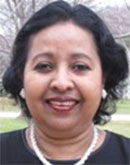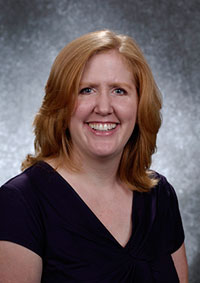I grew up in Indiana. I loved my childhood, and I love my hometown then and now, but I certainly realize that it is a pretty homogeneous community. I believe that Indiana does offer more diversity (in the interest of full disclosure, this is NOT scientifically or statistically proven) over other towns of its size because of places like IUP and Indiana Regional Medical Center, which tend to draw individuals from a variety of ethnic backgrounds.
I also appreciate that the university truly values diversity and has a dynamic and active Office of International Education that does extensive outreach throughout the year, including International Education Week (October 10-14 this year). I’ll be talking more about the week, which includes a naturalization ceremony, a first for IUP, in a future blog.
But with diversity comes challenges. The tragedy of September 11, 2001, changed the way that we look at the world (that’s not news to anyone) and placed the Islamic culture and religion in the spotlight in ways that it had never been before.
 That’s why I felt that the results of a study by Parveen Ali, an assistant professor in IUP’s Department of Developmental Studies, on “Perception of Islam and Muslims among College Students” would be both interesting and important to reporters.
That’s why I felt that the results of a study by Parveen Ali, an assistant professor in IUP’s Department of Developmental Studies, on “Perception of Islam and Muslims among College Students” would be both interesting and important to reporters.
The good news? Dr. Ali found that most students have an overall satisfactory attitude toward Muslims and Islam.
The not so good news? Most students have a misperception about where the majority of Muslims live, and some still associate Muslim with “terrorist.”
Any guesses about what was top-of-mind for students when they were asked for reactions to the word “Muslim”?
Forty-four percent responded with “normal people.” Twenty-one percent responded with “terrorist”; forty-four percent with “Arabs.” (They could choose more than one answer.)
And clearly, IUP students need to bone up on their geography. Eighty-four percent of surveyed students believed that the region where most Muslims lived is the Middle East.
Wrong answer.
Indonesia has the largest Muslim population of all of the world’s countries (15.6 percent), and Asia and the Pacific have 61.9 percent of the Muslim population, compared to 20.1 percent in the Middle East.
There is an increasing presence of Muslims on U.S. college campuses. That’s just a fact, Dr. Ali says.
That said, what’s the take away from this study?
“It is crucial to create awareness about Islam in college campuses in order to prevent discrimination, intolerance, false myths, and prejudice toward its believers.”
Well said.

 Over morning coffee, NPR listeners recently learned about eating habits that were discovered right here in Indiana, Pennsylvania. You can see the full story in
Over morning coffee, NPR listeners recently learned about eating habits that were discovered right here in Indiana, Pennsylvania. You can see the full story in 
 Criminology professor
Criminology professor